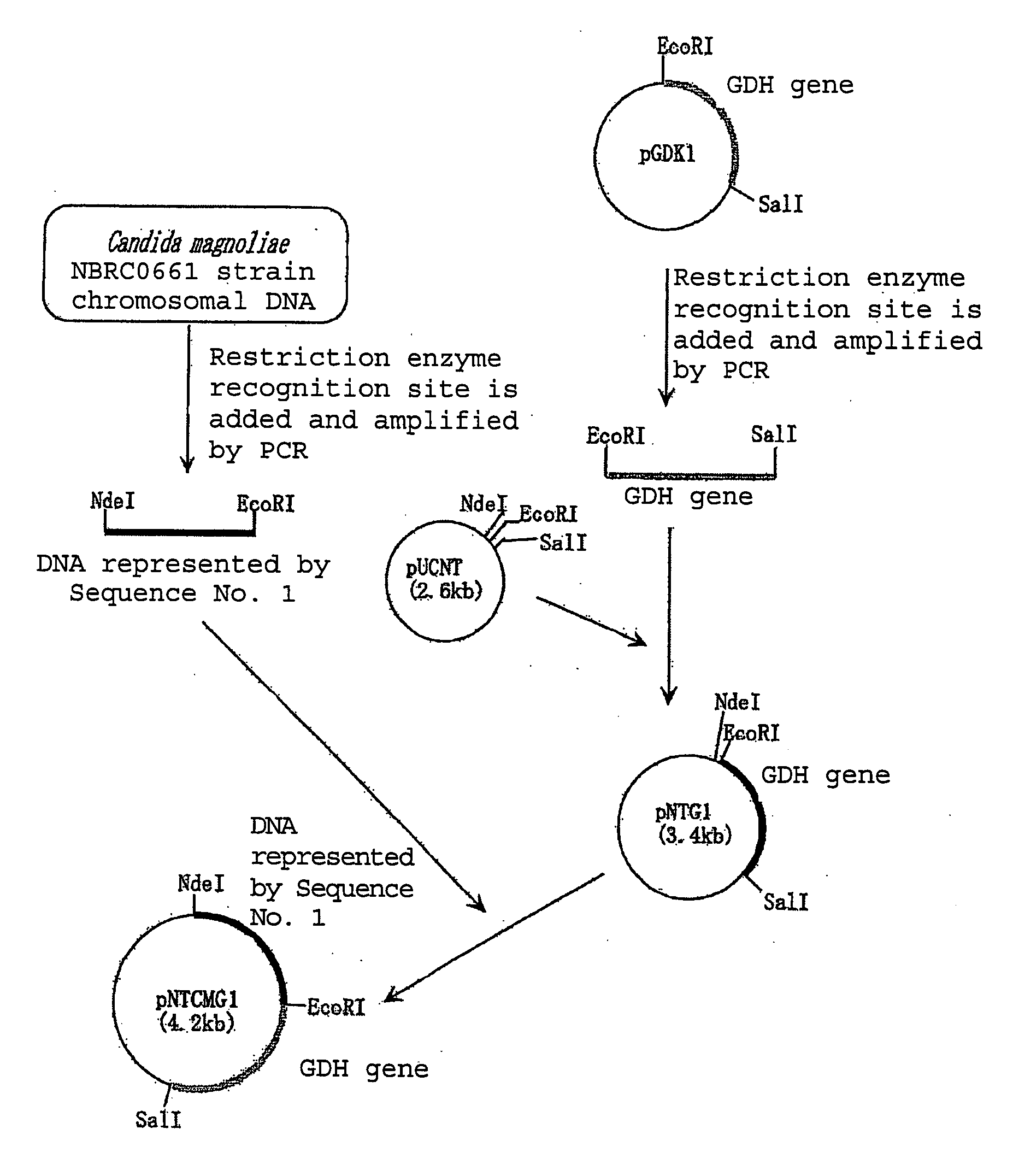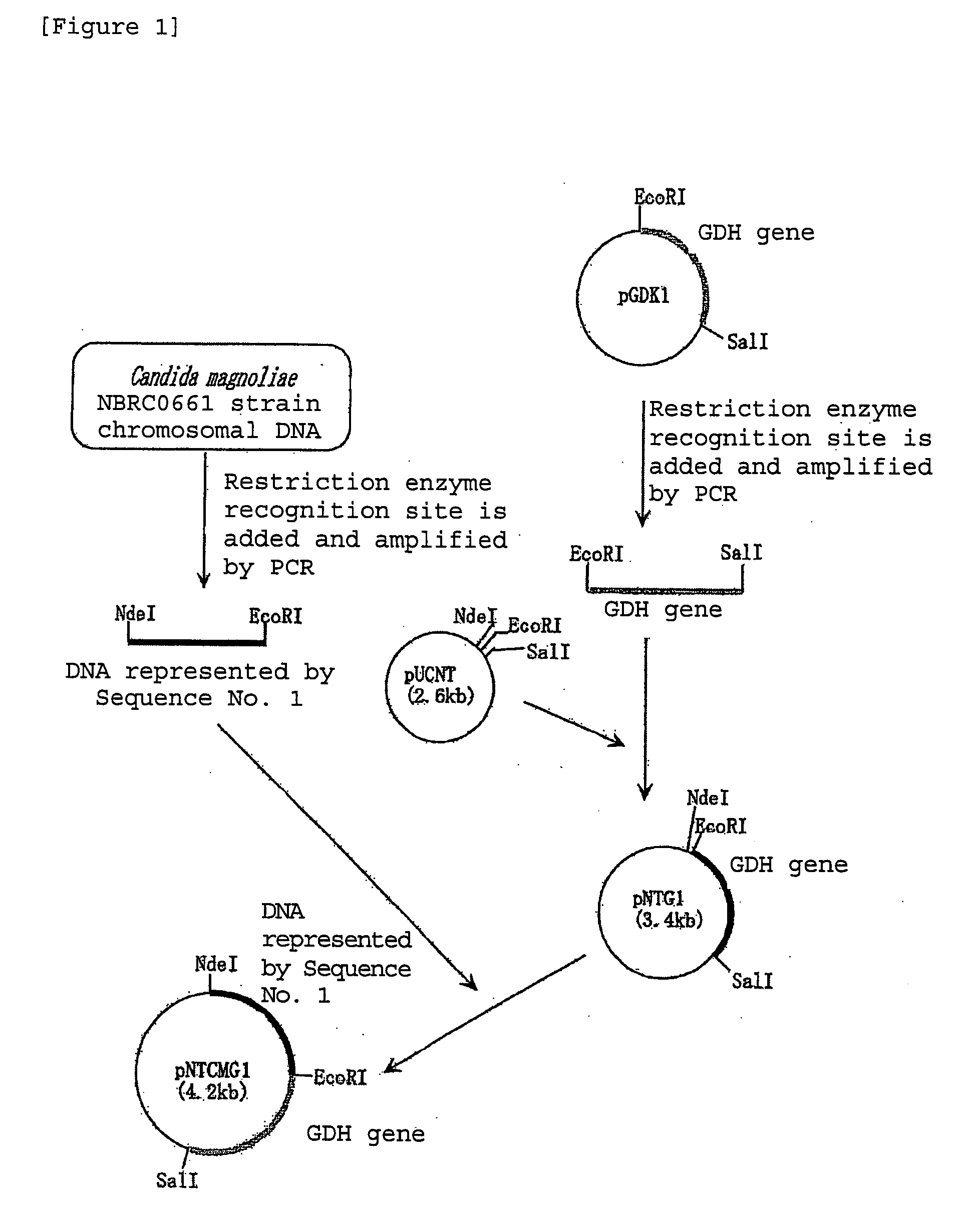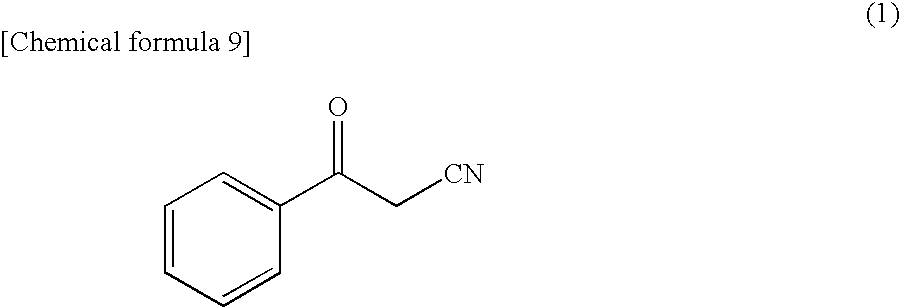Novel Carbonyl Reductase, Gene Therefor and Use Thereof
- Summary
- Abstract
- Description
- Claims
- Application Information
AI Technical Summary
Benefits of technology
Problems solved by technology
Method used
Image
Examples
example 1
Purification of Polypeptide
[0087]In accordance with the following method, a polypeptide from Candida magnoliae strain NBRC0661, having an activity of asymmetrically reducing 3-oxo-3-phenylpropanenitrile to produce (R)-3-hydroxy-3-phenylpropanenitrile was separated and purified as a single product. Purification operation was performed at 4° C. unless otherwise specified.
[0088]The reduction activity to 3-oxo-3-phenylpropanenitrile was obtained by dissolving a substrate, 3-oxo-3-phenylpropanenitrile so as to have a final concentration of 0.5 mM and a coenzyme NADPH in a final concentration of 0.25 mM in a 100 mM phosphate buffer (pH 6.5) containing 0.33% (v / v) of dimethylsulfoxide, further adding a crude enzyme solution, reacting the mixture at 30° C. for one minute, measuring absorbance of the reaction solution at a wavelength of 340 nm, and calculating a reduction rate of the absorbance. In the reaction conditions, the activity of oxidizing 1 μmol of NADPH to NADP per minute was defi...
example 2
[0106](Preparation of PCR Primer)
[0107]The purified polypeptide obtained in Example 1 was denatured in the presence of 8M urea, and thereafter digested with lysyl end-peptidase (manufactured by Wako Pure Chemical Industries Ltd.) derived from Achromobacter. The amino acid sequences of the obtained peptide fragments were determined by an ABI492-type protein sequencer (manufactured by PerkinElmer). Based on the putative DNA sequence from the amino acid sequence, a primer 1: 5′-cargarcaytaygtntggcc-3′(Sequence No. 3 of the sequence listing) and primer 2: 5′-atygcrtcnggrtadatcca-3′ (Sequence No. 4 of the sequence listing) were synthesized for amplifying a part of the gene encoding the polypeptide by PCR.
[0108](PCR Amplification of Gene)
[0109]Chromosomal DNA was extracted from bacterial cells of Candida magnoliae strain NBRC0661 cultured in the same manner as in Example 1 in accordance with the method of Visser et al. (Appl. Microbiol. Biotechnol., 53, 415 (2000)). Subsequent...
example 3
Construction of Expression Vector
[0112]PCR was performed using primer 3: 5′-gtgcatatgtcttctcttcacgctcttg-3′(Sequence No. 6 of the sequence listing) and primer 4: 5′-ggcgaattcttattaaacggtagagccattgtcg-3′(Sequence No. 7 of the sequence listing), and chromosomal DNA of Candida magnoliae strain NBRC0661 obtained in Example 2 as a template. As a result, a double stranded DNA was obtained having an NdeI recognition site added to the portion of the initiation codon of a gene consisting of the base sequence represented by Sequence No. 1 of the sequence listing and an EcoRI recognition site added immediately after the termination codon. PCR was performed using TaKaRa LA Taq (manufactured by Takara Bio Inc.) as DNA polymerase under the reaction conditions according to the instructions. The DNA was digested with NdeI and EcoRI and inserted between the NdeI recognition site and the EcoRI recognition site downstream of the lac promoter of plasmid pUCNT (WO 94 / 03613). In this manner, a recombinat...
PUM
| Property | Measurement | Unit |
|---|---|---|
| Electrical conductance | aaaaa | aaaaa |
| Mass | aaaaa | aaaaa |
| Mass | aaaaa | aaaaa |
Abstract
Description
Claims
Application Information
 Login to View More
Login to View More - R&D
- Intellectual Property
- Life Sciences
- Materials
- Tech Scout
- Unparalleled Data Quality
- Higher Quality Content
- 60% Fewer Hallucinations
Browse by: Latest US Patents, China's latest patents, Technical Efficacy Thesaurus, Application Domain, Technology Topic, Popular Technical Reports.
© 2025 PatSnap. All rights reserved.Legal|Privacy policy|Modern Slavery Act Transparency Statement|Sitemap|About US| Contact US: help@patsnap.com



